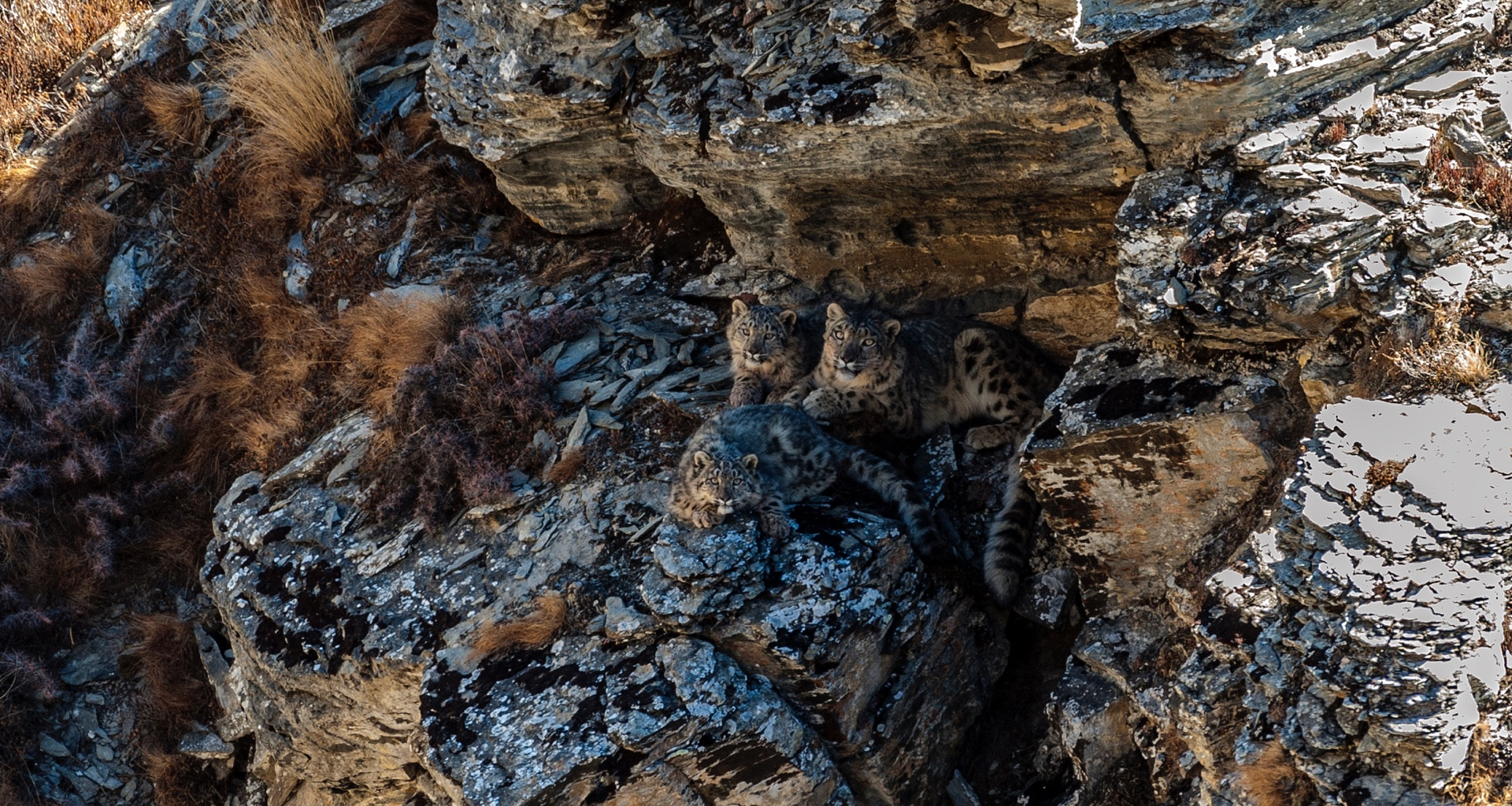Snow leopard (Panthera unicia) is the apex predator of the Himalayan ecosystem and are found in the high mountains of the Central and South Asia. In Nepal, potential snow leopard habitat is estimated to be about 13,000 km2, with a large number of snow leopards found to be occurring outside protected areas. The Government of Nepal has adopted landscape conservation planning approach to conserve the snow leopards by delineating three large conservation landscapes – the eastern, central and western landscapes. Nepal of is one of the 12 snow leopard range countries and the current estimated global snow leopard population range from 3,921 to 6,290, with Nepal having an estimated 350-500 snow leopards (DNPWC 2017). Although their intentional killing is virtually absent among the local people, snow leopards have become victims of retaliatory killing. Snow leopard's main prey species (blue sheep and Himalayan tahr) are depleting in numbers because of overgrazing of rangelands from domestic livestock, along with shifting traditional herding practices and overexploitation of medicinal plants. The shortage of natural prey lead to conflict with humans when snow leopard prey on livestock. Snow leopards live above 3,500 m in the rugged mountain terrain rendering their monitoring and detecting their poaching extremely difficult. However, recurring seizures of snow leopard parts and products point that their poaching and illegal trade exists in Nepal. Rising temperatures in the Himalayas of Nepal is causing treeline and snowline to shift upward that is expected to result in loss of approximately 30% of the snow leopard habitat. 'Compressing' snow leopard habitat could be further compounded by more intense habitat overlap between livestock and prey species, and with sympatric species such as common leopard, Himalayan wolf.
Listed in CITES Appendix I and protected under the National Parks and Wildlife Conservation Act, 1973, snow leopards were classified Endangered in the IUCN's Red List and down-listed in 2017 as Vulnerable because of the recent increase in their global population attributed to better population estimate using more reliable survey methods. The Snow Leopard Conservation Action Plan of Nepal targets to 'maintain a viable population of 100 breeding age snow leopard population with a support of adequate prey populations, and have functional connectivity to other snow leopard landscapes, some of which are sharing international boundaries and are conserved with the local community participation'. Due to their extensive home range and the need for overall biodiversity conservation in the landscapes, managing snow leopard population as meta-populations for their long-term conservation is in the priority.
NTNC's major efforts in snow leopard conservation is focused around the central snow leopard landscape which includes Manaslu and Annapurna Conservation Areas. Here, NTNC integrates cutting-edge technology, citizen science along with sustainable local livelihood to enhance its snow leopard conservation initiatives. Monitoring and research of snow leopards by using camera traps, sign surveys and genetic analysis is contributing to better understanding the behavior, population status and threat to snow leopard and prey species. In this effort, Conservation Area Management Committees (CAMC), Snow Leopard Conservation Committees (SLCC), and Snow Leopard Scouts are local institutions that NTNC establishes and capacitates to engage as scientists and local guardians. NTNC is dedicated to creating strong local support for the conservation of snow leopards through regular awareness camps and developing local capacity to reduce human-snow leopard conflict. Annapurna, Manaslu and Gaurishankar Conservation Areas continue to be choice of study sites for researchers where NTNC is active in providing research grants, technical guidance and logistic support.
To ensure long term human-snow leopard co-existence, herder communities are supported with predator-proof corals and non-lethal predator deterrents that have been of tremendous help to the herders, retaining their positive sentiments to snow leopards. In addressing livelihood loss to livestock predation, NTNC has initiated community livestock insurance schemes that provide relief to victim herders, securing snow leopards from retaliatory killing. In the days ahead, NTNC will continue to lead snow leopard conservation by engaging its technical expertise and enabling local communities in snow leopard monitoring and research, developing better ways to mitigate human-snow leopard conflicts, generate community awareness, and initiate snow leopard focused activities in other snow leopard landscapes.

